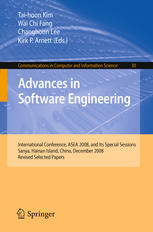

Most ebook files are in PDF format, so you can easily read them using various software such as Foxit Reader or directly on the Google Chrome browser.
Some ebook files are released by publishers in other formats such as .awz, .mobi, .epub, .fb2, etc. You may need to install specific software to read these formats on mobile/PC, such as Calibre.
Please read the tutorial at this link: https://ebookbell.com/faq
We offer FREE conversion to the popular formats you request; however, this may take some time. Therefore, right after payment, please email us, and we will try to provide the service as quickly as possible.
For some exceptional file formats or broken links (if any), please refrain from opening any disputes. Instead, email us first, and we will try to assist within a maximum of 6 hours.
EbookBell Team

4.1
70 reviewsAs software engineering (SE) becomes specialized and fragmented, it is easy to lose sight that many topics in SE have common threads and because of this, advances in one sub-discipline may transmit to another. The presentation of results between diff- ent sub-disciplines of SE encourages this interchange for the advancement of SE as a whole. Of particular interest is the hybrid approach of combining ideas from one d- cipline with those of another to achieve a result that is more significant than the sum of the individual parts. Through this hybrid philosophy, a new or common principle can be discovered which has the propensity to propagate throughout this multifaceted discipline. This volume comprises the selection of extended versions of papers that were p- sented in their shortened form at the 2008 International Conference on Advanced Software Engineering and Its Applications (http://www.sersc.org/ASEA2008/) and 2009 Advanced Science and Technology (http://www.sersc.org/AST2009/). We would like to acknowledge the great effort of all in the ASEA 2008 and AST 2009 International Advisory Board and members of the International Program Committee, as well as all the organizations and individuals who supported the idea of publishing these advances in software engineering, including SERSC (http://www.sersc.org/) and Springer. We would like to give special thanks to Rosslin John Robles, Maricel O. Balitanas, Farkhod Alisherov Alisherovish, Feruza Sattarova Yusfovna. These graduate school students of Hannam University attended to the editing process of this volume with great passion.